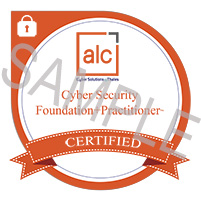CSF+P Cyber Security Foundation+Practitioner™ – The Cyber Security Course to Start Your Career
Advance Your Career
ALC’s 5-day Cyber Security Foundation+Practitioner™ course is designed for anyone who wants a sound understanding of Information / Cyber Security and a solid base on which to build their career. It is ideal for someone wanting to start a career in Cyber Security, or to transition their career. There are no pre-requisites to attend.
Maximise Your Cyber Resilience
The course follows a robust syllabus that covers all the key areas you need to know. At the same time, it provides maximum regional relevance by fully taking into account appropriate sections from the Australian Government Information Security Manual (ISM).

**Digital Badge Now Available**
CSF+P Face-to-Face or Live Virtual Training
ALC courses are either 100% in-person or 100% live virtual. That way you get the best training experience.
We do not offer hybrid Cyber Security training whereby some participants are physically in class while others are joining remotely. This invariably results in a lesser training experience. If the trainer focuses on the needs of one group, it is usually at the expense of the other. You can spare yourself the frustration of the hybrid experience with ALC fully-dedicated Cyber Security Foundation+Practitioner training course.
 Cyber Security
Cyber Security



